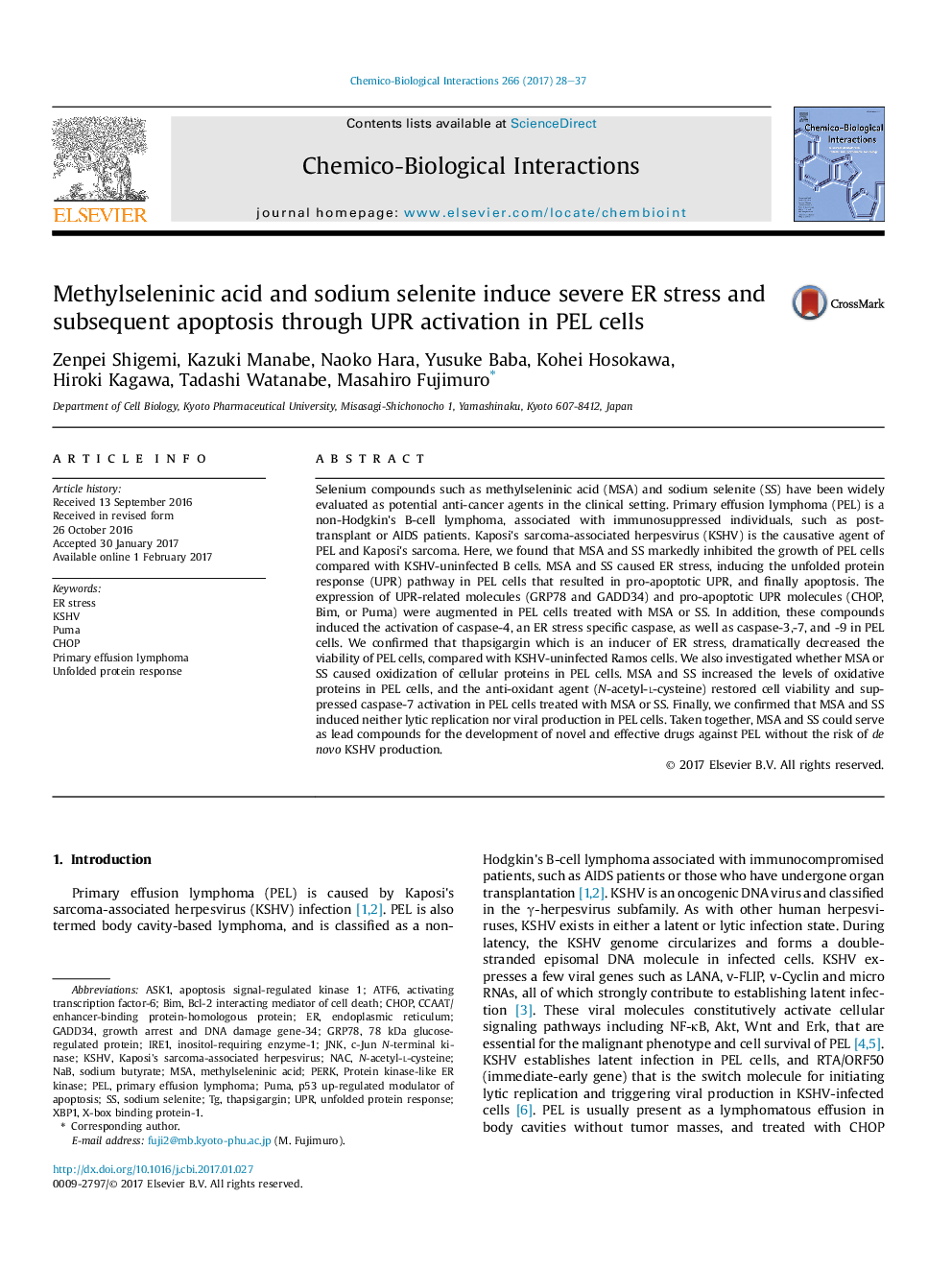| کد مقاله | کد نشریه | سال انتشار | مقاله انگلیسی | نسخه تمام متن |
|---|---|---|---|---|
| 5559417 | 1561576 | 2017 | 10 صفحه PDF | دانلود رایگان |

- MSA and SS activate the unfolded protein response (UPR) by ER stress through protein oxidization in PEL cells.
- MSA and SS induce apoptosis of PEL cells of PEL cells through CHOP, Bim, or Puma expression.
- MSA and SS induce neither lytic replication nor viral production in PEL cells.
- MSA and SS may serve as a novel drug for the treatment of PEL without the risk of de novo KSHV production.
Selenium compounds such as methylseleninic acid (MSA) and sodium selenite (SS) have been widely evaluated as potential anti-cancer agents in the clinical setting. Primary effusion lymphoma (PEL) is a non-Hodgkin's B-cell lymphoma, associated with immunosuppressed individuals, such as post-transplant or AIDS patients. Kaposi's sarcoma-associated herpesvirus (KSHV) is the causative agent of PEL and Kaposi's sarcoma. Here, we found that MSA and SS markedly inhibited the growth of PEL cells compared with KSHV-uninfected B cells. MSA and SS caused ER stress, inducing the unfolded protein response (UPR) pathway in PEL cells that resulted in pro-apoptotic UPR, and finally apoptosis. The expression of UPR-related molecules (GRP78 and GADD34) and pro-apoptotic UPR molecules (CHOP, Bim, or Puma) were augmented in PEL cells treated with MSA or SS. In addition, these compounds induced the activation of caspase-4, an ER stress specific caspase, as well as caspase-3,-7, and -9 in PEL cells. We confirmed that thapsigargin which is an inducer of ER stress, dramatically decreased the viability of PEL cells, compared with KSHV-uninfected Ramos cells. We also investigated whether MSA or SS caused oxidization of cellular proteins in PEL cells. MSA and SS increased the levels of oxidative proteins in PEL cells, and the anti-oxidant agent (N-acetyl-l-cysteine) restored cell viability and suppressed caspase-7 activation in PEL cells treated with MSA or SS. Finally, we confirmed that MSA and SS induced neither lytic replication nor viral production in PEL cells. Taken together, MSA and SS could serve as lead compounds for the development of novel and effective drugs against PEL without the risk of de novo KSHV production.
145
Journal: Chemico-Biological Interactions - Volume 266, 25 March 2017, Pages 28-37